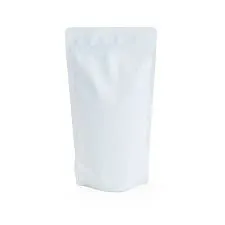- Afrikaans
- Albanian
- Amharic
- Arabic
- Armenian
- Azerbaijani
- Basque
- Belarusian
- Bengali
- Bosnian
- Bulgarian
- Catalan
- Cebuano
- chinese_simplified
- chinese_traditional
- Corsican
- Croatian
- Czech
- Danish
- Dutch
- English
- Esperanto
- Estonian
- Finnish
- French
- Frisian
- Galician
- Georgian
- German
- Greek
- Gujarati
- haitian_creole
- hausa
- hawaiian
- Hebrew
- Hindi
- Miao
- Hungarian
- Icelandic
- igbo
- Indonesian
- irish
- Italian
- Japanese
- Javanese
- Kannada
- kazakh
- Khmer
- Rwandese
- Korean
- Kurdish
- Kyrgyz
- Lao
- Latin
- Latvian
- Lithuanian
- Luxembourgish
- Macedonian
- Malgashi
- Malay
- Malayalam
- Maltese
- Maori
- Marathi
- Mongolian
- Myanmar
- Nepali
- Norwegian
- Norwegian
- Occitan
- Pashto
- Persian
- Polish
- Portuguese
- Punjabi
- Romanian
- Russian
- Samoan
- scottish-gaelic
- Serbian
- Sesotho
- Shona
- Sindhi
- Sinhala
- Slovak
- Slovenian
- Somali
- Spanish
- Sundanese
- Swahili
- Swedish
- Tagalog
- Tajik
- Tamil
- Tatar
- Telugu
- Thai
- Turkish
- Turkmen
- Ukrainian
- Urdu
- Uighur
- Uzbek
- Vietnamese
- Welsh
- Bantu
- Yiddish
- Yoruba
- Zulu
desiccant vs oxygen absorber
Desiccants vs. Oxygen Absorbers Understanding Their Roles in Preservation
When it comes to preserving food, pharmaceuticals, electronics, and other humidity-sensitive items, desiccants and oxygen absorbers play crucial roles. While both serve the purpose of extending shelf life, their mechanisms and applications differ significantly. Understanding the distinctions between these two substances can assist consumers and manufacturers alike in making informed decisions about how to protect their products.
What Are Desiccants?
Desiccants are materials that absorb moisture from the surrounding environment, reducing humidity levels within a sealed package. Common desiccants include silica gel, clay, and activated carbon. They work effectively to keep products dry, preventing damage from moisture such as mold growth, degradation, and spoilage. In many cases, desiccants are used in packaging for products like dried foods, electronics, leather goods, and pharmaceuticals to ensure that they remain moisture-free.
One of the significant advantages of desiccants is their ability to maintain low humidity levels without any chemical reactions. They simply absorb moisture, making them a passive but effective solution for moisture control. The efficiency of a desiccant depends on its surface area, porosity, and the relative humidity of the environment.
What Are Oxygen Absorbers?
Oxygen absorbers, on the other hand, are designed to remove oxygen from the packaging environment, thereby inhibiting the growth of aerobic bacteria, fungi, and enzymatic processes that can lead to the spoilage of food and other perishable items. These absorbers typically contain iron powder, which oxidizes when it comes into contact with oxygen in the air. This reaction consumes the oxygen inside the sealed package, creating an anaerobic environment that helps preserve the integrity of the product.
Oxygen absorbers are widely used in conjunction with foods that can deteriorate quickly, such as dried fruits, nuts, and vacuum-sealed meats. They are also used in pharmaceuticals and certain electronics to prevent oxidation, which can negatively affect performance and shelf life.
desiccant vs oxygen absorber

Key Differences Between Desiccants and Oxygen Absorbers
While both desiccants and oxygen absorbers serve the purpose of extending shelf life, their applications differ based on their specific functions
1. Mechanism Desiccants primarily absorb moisture, while oxygen absorbers remove oxygen from the environment. This difference is fundamental in determining which to use based on the product’s sensitivity to moisture or oxygen.
2. Applications Desiccants are ideal for products that need to be kept dry, such as grains, seeds, and certain electronics. Oxygen absorbers, however, are essential for products prone to spoilage due to oxidation, making them more appropriate for packaged food items and pharmaceuticals.
3. Shelf Life Desiccants can often be reused or regenerated, especially silica gel, which can be dried out and reactivated for further use. Oxygen absorbers, however, are typically single-use items that work until they absorb all available oxygen, at which point they must be discarded.
Choosing Between Desiccants and Oxygen Absorbers
The choice between desiccants and oxygen absorbers often depends on the specific needs of the product being preserved. For products that are sensitive to both moisture and oxygen, a combination of both desiccants and oxygen absorbers can be utilized for optimal preservation. Manufacturers often test various methods to achieve the best results in terms of shelf life and product quality.
In conclusion, both desiccants and oxygen absorbers are essential tools in the realm of preservation. By understanding their unique properties, consumers and manufacturers can better protect their products against spoilage, ensuring quality and safety over time. The effective use of these substances can lead to longer shelf life, reduced waste, and overall satisfaction for consumers. Choosing the right preservation method is vital in today’s market, where quality and freshness are paramount.













